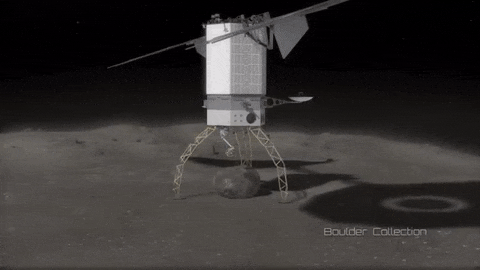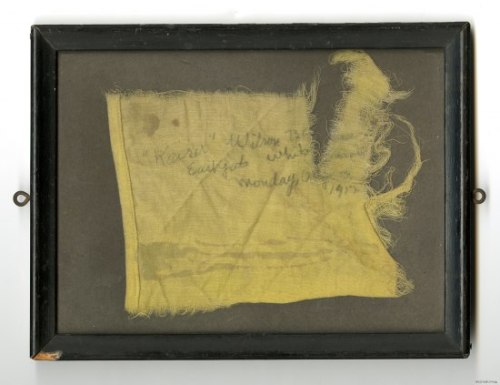Cutler Anderson Architects. Newberg Residence. Bellevue. Washington. USA. Photos: Cutler Anderson Architect





Cutler Anderson Architects. Newberg Residence. Bellevue. Washington. USA. photos: Cutler Anderson Architect - Beautiful family residence & guesthouse with a strong connection to the living world.
More Posts from Stubborn-turtle-blog and Others

"There’s a certain aesthetic attached to the oldest cities in the world: bustling souks beneath a bright blue sky, flowing garments made of whispery white cotton, stone masonry painted yellow by the sun."
Mission Possible: Redirecting an Asteroid
As part of our Asteroid Redirect Mission (ARM), we plan to send a robotic spacecraft to an asteroid tens of millions of miles away from Earth, capture a multi-ton boulder and bring it to an orbit near the moon for future crew exploration.

This mission to visit a large near-Earth asteroid is part of our plan to advance the new technologies and spaceflight experience needed for a human mission to the Martian system in the 2030s.
How exactly will it work?
The robotic spacecraft, powered by the most advanced solar electric propulsion system, will travel for about 18 months to the target asteroid.

After the spacecraft arrives and the multi-ton boulder is collected from the surface, the spacecraft will hover near the asteroid to create a gravitational attraction that will slightly change the asteroid’s trajectory.

After the enhanced gravity tractor demonstration is compete, the robotic vehicle will deliver the boulder into a stable orbit near the moon. During the transit, the boulder will be further imaged and studied by the spacecraft.

Astronauts aboard the Orion spacecraft will launch on the Space Launch System rocket to explore the returned boulder.

Orion will dock with the robotic vehicle that still has the boulder in its grasp.

While docked, two crew members on spacewalks will explore the boulder and collect samples to bring back to Earth for further study.

The astronauts and collected samples will return to Earth in the Orion spacecraft.
How will ARM help us send humans to Mars in the 2030s?

This mission will demonstrate future Mars-level exploration missions closer to home and will fly a mission with technologies and real life operational constraints that we’ll encounter on the way to the Red Planet. A few of the capabilities it will help us test include:
Solar Electric Propulsion – Using advanced Solar Electric Propulsion (SEP) technologies is an important part of future missions to send larger payloads into deep space and to the Mars system. Unlike chemical propulsion, which uses combustion and a nozzle to generate thrust, SEP uses electricity from solar arrays to create electromagnetic fields to accelerate and expel charged atoms (ions) to create a very low thrust with a very efficient use of propellant.
Trajectory and Navigation – When we move the massive asteroid boulder using low-thrust propulsion and leveraging the gravity fields of Earth and the moon, we’ll validate critical technologies for the future Mars missions.
Advances in Spacesuits – Spacesuits designed to operate in deep space and for the Mars surface will require upgrades to the portable life support system (PLSS). We are working on advanced PLSS that will protect astronauts on Mars or in deep space by improving carbon dioxide removal, humidity control and oxygen regulation. We are also improving mobility by evaluating advances in gloves to improve thermal capacity and dexterity.
Sample Collection and Containment Techniques – This experience will help us prepare to return samples from Mars through the development of new techniques for safe sample collection and containment. These techniques will ensure that humans do not contaminate the samples with microbes from Earth, while protecting our planet from any potential hazards in the samples that are returned.
Rendezvous and Docking Capabilities – Future human missions to Mars will require new capabilities to rendezvous and dock spacecraft in deep space. We will advance the current system we’ve developed with the international partners aboard the International Space Station.
Moving from spaceflight a couple hundred miles off Earth to the proving ground environment (40,000 miles beyond the moon) will allow us to start accumulating experience farther than humans have ever traveled in space.
Make sure to follow us on Tumblr for your regular dose of space: http://nasa.tumblr.com
Squishy physics!
How physicists see other fields:
Biology: squishy physics
Geology: slow physics
Computer Science: virtual physics
Psychology: people physics
Chemistry: impure physics
Math: physics without units

This small scrap of cloth tells a much larger story of suffrage history.
This week in 1917, the National Women’s Party started picketing outside the White House for the right to vote. For months they protested silently, until a crowd began taunting them, throwing eggs and tomatoes at them, and tearing up their banners.
So the women made more banners.
A scrap from one was seized by police but eventually made its way to Alice Paul, the founder of the NWP and leader of the pickets, and then into our National Museum of American History.









Casa Sperimentale’ Ruins
Architect: Giuseppe Perugini
Location/Year: Via Porto Azzurro, 57, 00054 Fregane RM (Rome) Italie / 1971
Pictures/Source: Oliver Astrologo + Google / designboom
The Gasoline Station is a proud partner of the Minuscule community network.
Artists + Bloggers + Sponsors = Stronger Together
-
 sophisticatedexuberance liked this · 2 years ago
sophisticatedexuberance liked this · 2 years ago -
 theregoesdk liked this · 3 years ago
theregoesdk liked this · 3 years ago -
 maria-santos-stuff liked this · 3 years ago
maria-santos-stuff liked this · 3 years ago -
 afotw liked this · 3 years ago
afotw liked this · 3 years ago -
 guillejm liked this · 6 years ago
guillejm liked this · 6 years ago -
 thisismylifeilove reblogged this · 6 years ago
thisismylifeilove reblogged this · 6 years ago -
 interiorframe reblogged this · 6 years ago
interiorframe reblogged this · 6 years ago -
 yagmurkokankanatlar liked this · 6 years ago
yagmurkokankanatlar liked this · 6 years ago -
 purplethesky liked this · 6 years ago
purplethesky liked this · 6 years ago -
 camkenaricocuklari reblogged this · 6 years ago
camkenaricocuklari reblogged this · 6 years ago -
 ubehlebemvelo reblogged this · 6 years ago
ubehlebemvelo reblogged this · 6 years ago -
 ubehlebemvelo liked this · 6 years ago
ubehlebemvelo liked this · 6 years ago -
 mutlu-olamiyorum-ben reblogged this · 6 years ago
mutlu-olamiyorum-ben reblogged this · 6 years ago -
 muallimehaniimm reblogged this · 6 years ago
muallimehaniimm reblogged this · 6 years ago -
 muallimehaniimm liked this · 6 years ago
muallimehaniimm liked this · 6 years ago -
 alvinmondragon-blog liked this · 6 years ago
alvinmondragon-blog liked this · 6 years ago -
 mismen reblogged this · 6 years ago
mismen reblogged this · 6 years ago -
 interiorframe reblogged this · 6 years ago
interiorframe reblogged this · 6 years ago -
 veniividiamavii reblogged this · 6 years ago
veniividiamavii reblogged this · 6 years ago -
 villataya liked this · 6 years ago
villataya liked this · 6 years ago -
 electronlibre63 reblogged this · 6 years ago
electronlibre63 reblogged this · 6 years ago -
 electronlibre63 liked this · 6 years ago
electronlibre63 liked this · 6 years ago -
 interior3000 reblogged this · 6 years ago
interior3000 reblogged this · 6 years ago -
 tuttoesageratamente liked this · 6 years ago
tuttoesageratamente liked this · 6 years ago -
 vele-e-vento liked this · 6 years ago
vele-e-vento liked this · 6 years ago -
 balamchis liked this · 6 years ago
balamchis liked this · 6 years ago -
 apotheosization reblogged this · 7 years ago
apotheosization reblogged this · 7 years ago -
 thepepp liked this · 7 years ago
thepepp liked this · 7 years ago -
 jdiegoruiz liked this · 7 years ago
jdiegoruiz liked this · 7 years ago -
 sitwithmeinsilence liked this · 7 years ago
sitwithmeinsilence liked this · 7 years ago -
 veroniqueetsonchat-blog liked this · 7 years ago
veroniqueetsonchat-blog liked this · 7 years ago -
 untitled24068 liked this · 7 years ago
untitled24068 liked this · 7 years ago -
 hcy12626 liked this · 7 years ago
hcy12626 liked this · 7 years ago -
 nourhene11 liked this · 7 years ago
nourhene11 liked this · 7 years ago
Gaming, Science, History, Feminism, and all other manners of geekery. Also a lot of dance
243 posts


